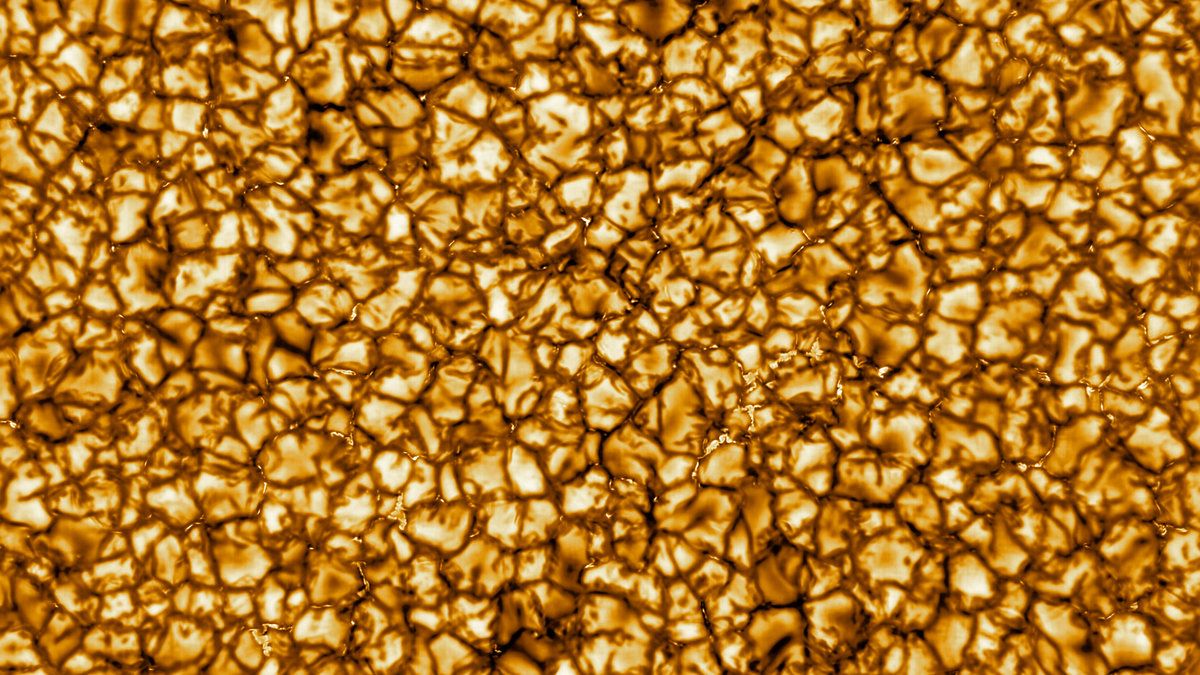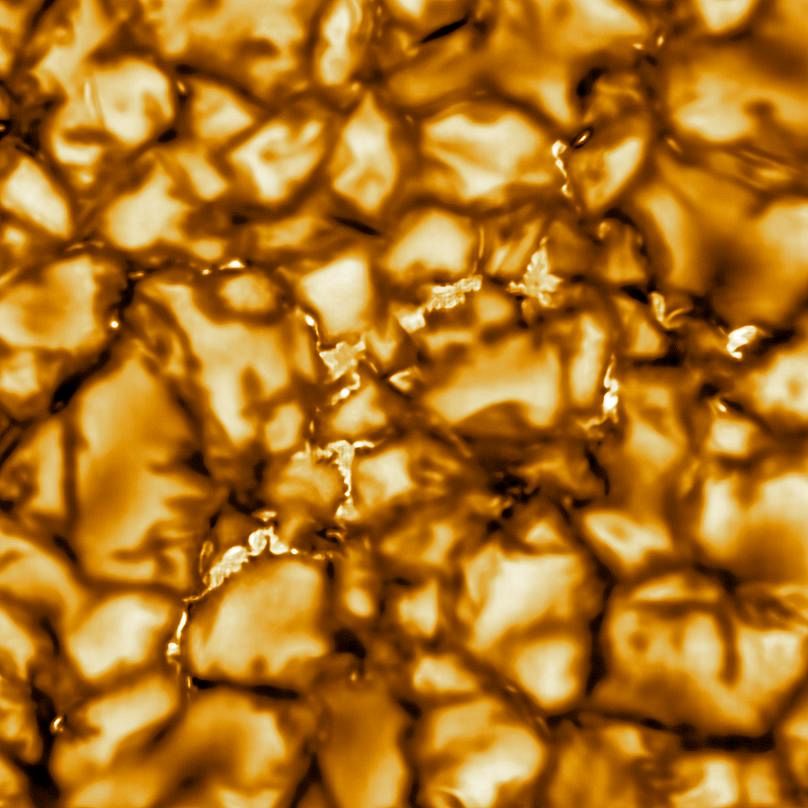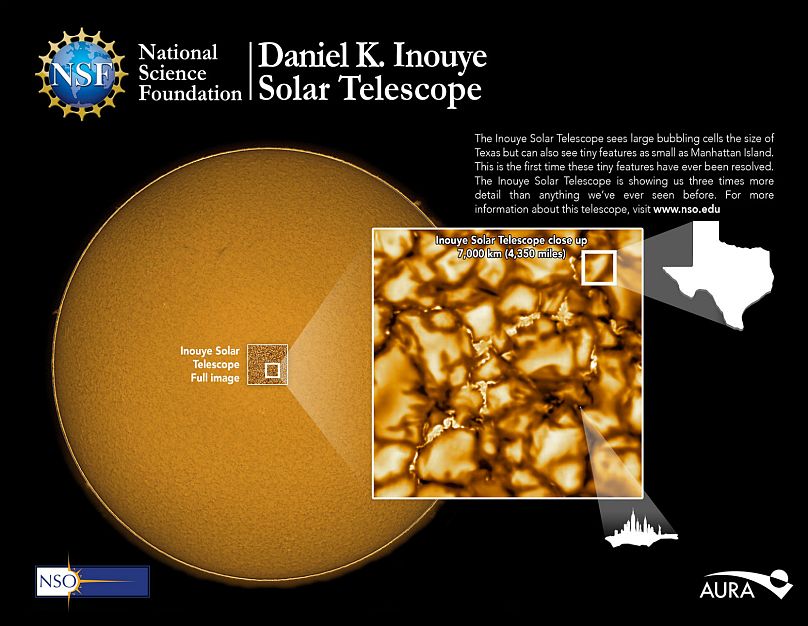These pictures show the surface of the Sun in remarkable detail.
Astronomers using the world's largest solar telescope have released new images showing the surface of the Sun in "unprecedented detail".
The first images from the Daniel K. Inouye Solar Telescope reveal a pattern of "turbulent 'boiling' plasma that covers the entire Sun".
"The cell-like structures — each about the size of Texas — are the signature of violent motions that transport heat from the inside of the Sun to its surface," the US National Science Foundation (NSF) said in a statement.
Scientists hope that the Daniel K. Inouye Solar Telescope — located in Hawaii and measuring more than four metres — can help them monitor the Sun's magnetic field which can impact systems on Earth including air travel, satellite communications and power grids.
"On Earth, we can predict if it is going to rain pretty much anywhere in the world very accurately, and space weather just isn’t there yet," Matt Matt Mountain, president of the Association of Universities for Research in Astronomy, which manages the Inouye Solar Telescope, said.
"Our predictions lag behind terrestrial weather by 50 years, if not more. What we need is to grasp the underlying physics behind space weather, and this starts at the Sun, which is what the Inouye Solar Telescope will study over the next decades," he added.
Better understanding the Sun's magnetic fields, their directions and strength would allow governments to better prepare for future space events and secure power grids, critical infrastructure and put satellites into safe mode.
"During 2017’s Hurricane Irma, the National Oceanic and Atmospheric Administration reported that a simultaneous space weather event brought down radio communications used by first responders, aviation and maritime channels for eight hours on the day the hurricane made landfall," The NSF explained.




